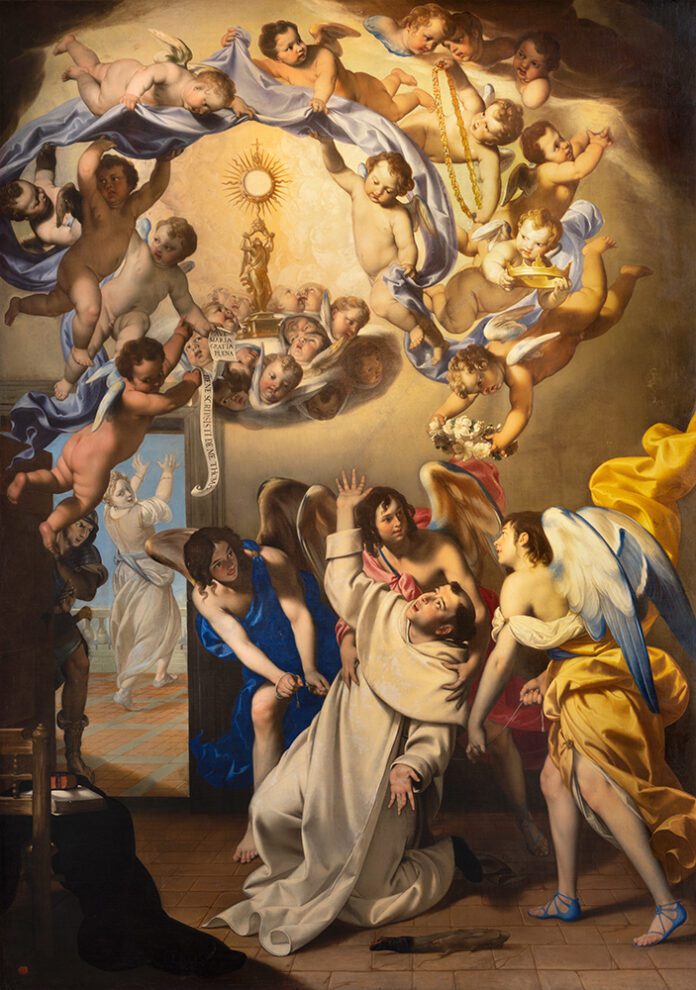In response to some academics stating that Jesus was only symbolically present in the Eucharist, the Fourth Lateran Council used a relatively new term to describe the change of the bread and wine into the Body and Blood of Jesus: Transubstantiation. While there was no explanation as to what exactly this term meant, the use by the Council lays the foundation for St. Thomas Aquinas to explain its meaning.
In explaining the Eucharist, St. Thomas reminds us that the Word of God is effective when spoken, and we should believe that Jesus means what He says. But for those who would like more explanation, Aquinas draws from the metaphysics of the Greek philosopher Aristotle.
Aristotle says there is a distinction between what a thing is and what it has. What a thing is he calls substance, and what a thing has he calls its accidents. Thus, we recognize the substance (chair) of a thing through accidents (sizes, shapes, materials, colors, etc). As a result, we sometimes call a thing’s accidents its appearances. A substance remains present until its accidents are destroyed or formed into something else.
St. Thomas explains that transubstantiation is when a substance is changed even if its appearance or accidents are not. In relation to the consecration of the Eucharist, when the priest speaks the words, This is my Body…This is my blood…, The substance of bread and the substance of wine are changed by God’s Word into the substance of Christ’s body and the substance of his blood. The change is complete and entire. Nothing of the substance of bread or wine remains. Neither is eliminated, but both are simply changed. However, when this process takes place, the accidents (or physical properties) of bread and wine remain. So what we experience physically in the Eucharist does not differ from if we were to experience bread and wine. This means that under close scientific examination the Eucharist will appear as bread and wine, but the true substance is the Body and Blood of Christ.
We must not be tempted to think that in this process that God jumps from place to place, leaving the previous place behind. Jesus has resurrected and ascended into heaven where He constantly intercedes for us at the right hand of the Father. He does not leave this position. Rather, it is through the power of the Holy Spirit that makes the same Jesus who is present in heaven, present at each validly celebrated mass. Like a fire of love, Jesus’ presence spreads throughout the world in the Eucharist, fulfilling His wish to set the world ablaze (Luke 12:42).
In the height of the protestant reformation which denied the true presence of Jesus in the Eucharist, the Council of Trent made Transubstantiation dogma in the 16th century. While the doctrine of Transubstantiation is an effective tool to dispute heresies, we must not forget the mystery that is associated with this beautiful gift from God. We do not understand how God can change the substance of one thing into another; But we do know that He can, and that He has done it.
Originally published in Prime Soil Magazine | Vol. 1 No. 2
Originally presented at The 10th National Eucharistic Congress in July 2024






